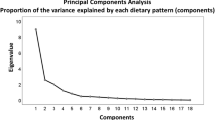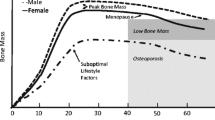Abstract.
The aim of this cross-sectional study was to investigate whether two types of physical exercise affect the growing skeleton differently. We used calcaneal quantitative ultrasound measurements (QUS) and dual-energy X-ray absorptiometry (DXA) for measurement of bone mineral density (BMD), and to test how QUS values reflect the axial DXA values in these various study groups. A total of 184 peripubertal Caucasian girls aged 11–17 years (65 gymnasts, 63 runners, and 56 nonathletic controls) were studied. Weight, height, stage of puberty, years of training, and the amount of leisure-time physical activity were recorded. Broadband ultrasound attenuation (BUA) and sound of speed (SOS) through the calcaneus were measured. The BMD of the femoral neck and the lumbar spine were measured by DXA. The differences in mean values of bone measurements among each exercise group were more evident in pubertal than prepubertal girls. The mean BUA and SOS values of the pubertal gymnasts were 13.7% (77.8 dB/MHz versus 68.4 dB/MHz, P < 0.05) and 2.2% (1607.7 m/s versus 1572.4 m/s, P < 0.001) higher than of the controls, respectively. The mean BMD of the femoral neck in the pubertal gymnasts and runners was 20% (0.989 g/cm2 versus 0.824 g/cm2, P < 0.001) and 9.0% (0.901 g/cm2 versus 0.824 g/cm2, P < 0.05) higher than in the controls, respectively. The amount of physical activity correlated weakly but statistically significantly with all measured BMD and ultrasonographic values in the pubertal group (r = 0.19–0.35). The correlation between ultrasonographic parameters and BMD were weak, but significant among pubertal runners (r = 0.47–0.55) and controls (r = 0.39–0.42), whereas the DXA values of the femoral neck and the ultrasonographic parameters of the calcaneus did not correlate among highly physically active gymnasts. By stepwise regression analysis, physical activity accounted for much more of the variation in the DXA values than the ultrasonographic values. We conclude that the beneficial influence of exercise on bone status as measured by ultrasound and DXA was evident in these peripubertal girls. In highly active gymnasts the increase of the calcaneal ultrasonographic values did not reflect statistically significantly the BMD values of the femoral neck.
Similar content being viewed by others
Author information
Authors and Affiliations
Additional information
Received: 28 June 1999 / Accepted: 2 November 1999
Rights and permissions
About this article
Cite this article
Lehtonen-Veromaa, M., Möttönen, T., Nuotio, I. et al. Influence of Physical Activity on Ultrasound and Dual-Energy X-ray Absorptiometry Bone Measurements in Peripubertal Girls: A Cross-Sectional Study. Calcif Tissue Int 66, 248–254 (2000). https://doi.org/10.1007/s002230010050
Published:
Issue Date:
DOI: https://doi.org/10.1007/s002230010050




